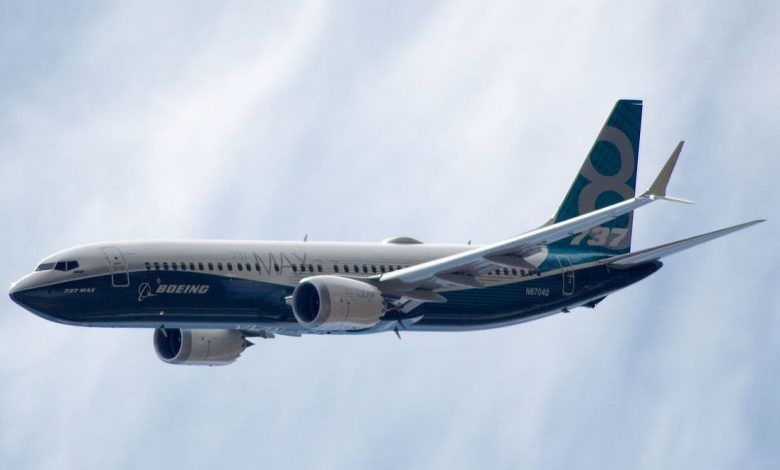What can maritime learn from the Boeing 737 Max disaster?

Wallem Group CEO Frank Coles compared the Boeing 737 Max disasters to maritime last month at the Maritime CEO Forum, a theme he came back to when speaking at the Nautical Institute’s Singapore conference this week. Writing exclusively for Splash today, Coles expands on the topic, maintaining the current maritime industry model is not designed to provide the technology oversight required for the next level of technological solutions.
As the never ending discussion of autonomous ships continues it’s worth noting the events surrounding the Boeing 737 Max disaster. We can quickly see similarities and issues that also occur in maritime.
The 737 mistakes began nearly a decade ago when Airbus announced a new fuel-efficient plane that threatened Boeing’s core business. So it was that Boeing rushed the competing 737 Max to market as quickly as possible.
Boeing not only cut corners, and then also pushed them as selling points for airlines. The 737 Max was the same plane type as its predecessors, which meant pilots would only need a 2.5-hour iPad training to fly its newest iteration.
MCAS is the new software system blamed for the deadly Lion Air and Ethiopian Airlines crashes. But its failure in both crashes was the result of Boeing and the Federal Aviation Administration’s reluctance to properly inform pilots of its existence or to regulate it for safety.
The FAA has admitted to being incompetent when regulating software. Also as a policy, the FAA allows plane manufacturers to police themselves for safety. Nowhere in the amended type certification of the 737 Max is MCAS mentioned.
Nevertheless, Boeing only recommends a 30-minute self-study course for pilots on MCAS, rather than additional simulator or classroom instruction.
It appears that regulatory oversight failures, a lack of training and the manufacturers failure to disclose the weakness in the system all contributed to a disaster. The maritime industry must for future reference take heed if it is to consider any form of automation, or autonomy. A development cycle cannot be fast, cheap and good. Moreover auditing, training and transparency cannot be outsourced or bypassed.
The maritime industry needs to move to a different business model where failure is not an option, mistakes cannot be allowed to escalate and where training is paramount.
The current maritime industry model is not designed to provide technology oversight at the level required for the next level of technological solutions. Aviation has been working with complex automation for years and years, and still fails to keep an aircraft in the flight envelope.
The classification societies are either not equipped to be the arbiter of equipment and software certification and/or conflicted with their commercial operations and desire to have the most ships.
The manufacturers are often forced to compete at a commodity level against each other. In a rush to get something out this creates weakness in the product manangement cycle in terms of software releases being buggy, not tested enough.
At the centre of the problem the prescriptive method of creating regulations (using a United Nations body with advisers) provides too much ambiguity for manufacturers and this allows both wide variations and even weaknesses that are not disclosed. If we keep doing the same thing over and over again we cannot expect a different result. (ECDIS, Ballast Water, 2020)
Even when we have released the software or navigation tools or other equipment, the training cycle or requirements are dialled back, not repetitive and provide certification rather than competence. Training is a paramount factor going forwards in a technology world. (Type versus specific training and use of simulation)
The industry infrastructure needs a shake up, business attitudes have to change and best practice collaboration has to prevail before a safer environment for automation can exist. In fact there can be no real digitalisation of the industry unless changes come to process, business models and adaption to the role of technology and impacts on the way to design, test and operate.
Another thing I find important for the discussion is how the need for MCAS emerged. Boeing didn’t redesign the plane, they just increased the size and modified the position of the motors, which resulted in the tendency for the plane’s nose to pitch up. To overcome this they developed MCAS and they wanted MCAS to be an element of the aircraft like a wing or a flap…that’s why they didn’t include this in the manuals; it wasn’t a special operation it was how this aircraft would fly, and worse is that they gave priority to the system than the human element on the decision making process.
I see two issues with this.
Adding new technology to an old design it is not innovation. We do this much in shipping, we just add bits and pieces of technology on the ships, but the fundamental design of the systems is the same as in the ‘70s.
We are not there yet when the machine can be me absolutely trusted to overcome the human, unless multiple barriers are out place in which case it wouldn’t probably make economic sense to go autonomous in the current environment.

An excellent article. The analogy of the Boeing 737 Max is perfect to highlight the pitfalls of add-on technology rather than comprehensive re-design and commercial considerations that bring about short-cuts in shipping.
Traditional regulatory bodies fall short when testing and certifying software driven technology. There is need to test, certify and train differently.
I can think of a couple of examples, over my career, of excellent ship equipment which acquired a golden reputation and whose makers were tempted to keep “tweaking” it, in pursuit of better efficiency, to the point where a new model, specified, in some numbers by shipowners’ newbuilding staffs on the basis of its excellent reputation, suddenly failed disastrously and repeatedly.
One was a medium speed diesel engine and one was an exhaust gas boiler. I’m sure there are others.